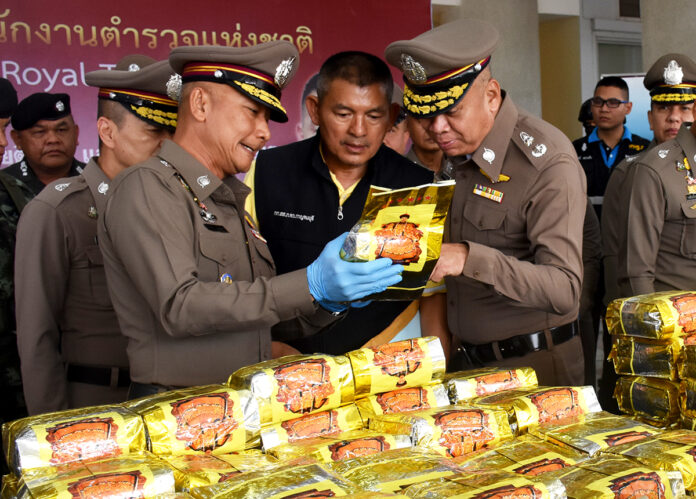
BANGKOK — Despite authorities cracking down on methamphetamine in Thailand and Southeast Asia, efforts have failed to arrest the trade’s big players, a recent UN report says.
“A profound change has taken place in Southeast Asia’s illicit drug market in recent years as massive amounts of synthetic drugs, in particular methamphetamine, have been increasingly produced in and trafficked from northern Myanmar,” stated a 2019 United Nations Office on Drugs and Crime (UNODC) report entitled “Transnational Organized Crime in Southeast Asia: Evolution, Growth and Impact.”
Thailand and much of Southeast Asia is the global center for the consumption of methamphetamine, locally known as yaa baa, due to the region’s large youth population and rising income, explained Jeremy Douglas, the UNODC regional representative for Southeast Asia and the Pacific, during the report’s launch at the Foreign Correspondents’ Club of Thailand on Thursday.
Drug producers push their products “by intentionally lowering the price,” said Douglas, describing a market for meth in Southeast Asia worth USD$61 billion. One can purchase meth in Bangkok for as low as 60 baht per tablet, a price comparable to a carton of milk.
Due to the ease with which users can access the drug, Douglas urges authorities to address the problem of meth through demand rather than supply. Even if half of all meth produced in the region was confiscated, there would still be enough to flood the streets of Southeast Asia, he argued.
Last year saw 120 tons of meth confiscated in Southeast Asia, a sharp rise from 80 tons in 2017.
“We really need to address the growth of the market and demand,” said the UNODC regional representative.
Moreover, big players who make “billions of dollars” often escape justice, said Douglas.
Factors driving the continued demand for yaa baa include the displacement of transnational organized crime and large-scale manufacturers from other parts of Asia, especially China.
In 2008, the annual UNODC report classified Thailand, Laos and the Philippines as the only Southeast Asian countries where meth is the primary drug of concern. A decade later, the report classifies the whole of Southeast Asia, except Vietnam, as having methamphetamine as its primary drug of concern.
The Golden Triangle (formed by the borders of northern Thailand, Laos and Myanmar), once an infamous center for opium and heroin production, is now a major meth production center, explained Douglas.
Shan state in Myanmar, where separatist fighting continues against the central government in Naypyidaw, is an especially vital region for trafficking.
“Sharing borders with China, Laos and Thailand, Shan state is a significant source for methamphetamine trafficked from Myanmar to the three countries in Southeast Asia and beyond, including Australia, Japan, New Zealand and the Republic of Korea,” the report stated.










































